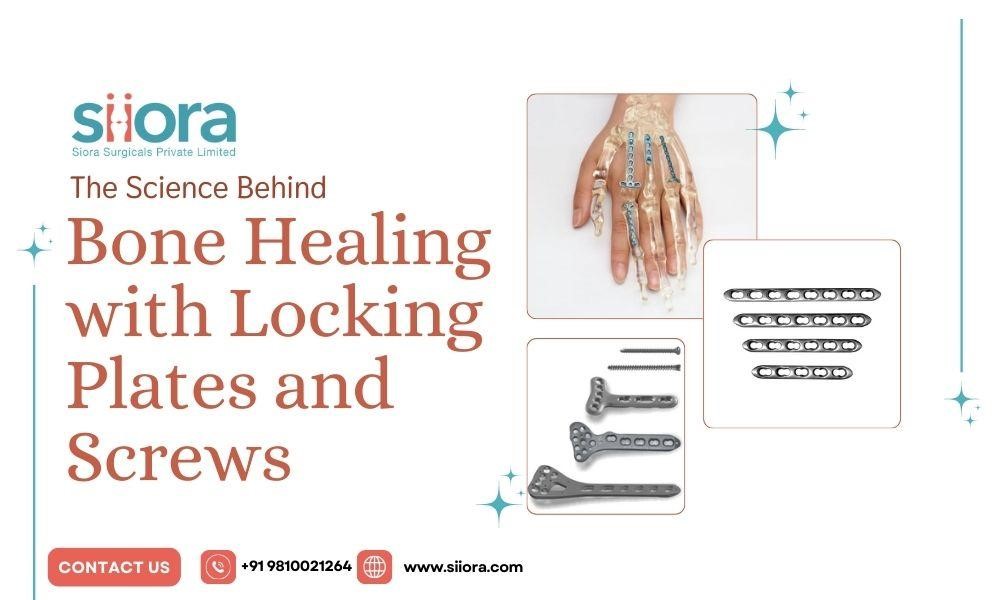Bones are remarkable structures, capable of regenerating and repairing themselves when injured. Yet, severe fractures often need a little extra help to heal correctly. One of the most revolutionary advancements in orthopedic surgery is the use of locking plates and screws. These orthopedic devices are designed to stabilize broken bones and guide them through the healing process. But what makes these devices so effective? Let’s explore the fascinating science behind bone healing with locking plates and screws.
Understanding Bone Healing: A Natural Process
When a bone breaks, the body initiates a complex, multi-stage healing process. This natural repair mechanism unfolds in three main stages:
Inflammation (0-7 days)
Right after a fracture, the body triggers an inflammatory response. Blood vessels rupture, causing clot formation. This clot serves as a temporary scaffold, and immune cells flood the area to clean out debris and signal repair mechanisms to kick in.
Repair (1-4 weeks)
The body starts building a soft callus made of collagen and cartilage. Over time, this soft callus is replaced with a harder, woven bone as new bone cells (osteoblasts) deposit minerals like calcium and phosphate.
Remodeling (weeks to months or even years)
The newly formed woven bone is gradually replaced with mature, organized bone. Osteoclasts (cells that break down bone) and osteoblasts work together to reshape the bone, restoring its original structure and strength.
For minor fractures, a simple cast might suffice. But in cases of complex or unstable fractures, the body needs additional support to align and hold the bones in place during healing. That’s where locking plates and screws come in.
Locking Plates and Screws: A Game-Changer in Orthopedics
Traditional bone plates rely on friction between the plate and bone surface to hold fractures together. However, orthopedic locking plates introduce a more innovative design. In these systems, screws lock into the plate itself, creating a rigid, fixed-angle construct. This design offers several benefits that enhance healing:
Enhanced Stability
Because screws lock into the plate, they create a stable, unified structure that resists shifting, even under mechanical loads. This stability is crucial for fractures in weight-bearing bones, as it reduces micro-movements that could disrupt healing.
Preserved Blood Supply
Traditional plating techniques compress the plate against the bone, potentially compromising blood flow to the fracture site. Locking plates minimize this contact, preserving the periosteal blood supply that’s vital for nourishing regenerating bone cells.
Reduced Need for Perfect Bone Contact
Locking systems provide stability even if bone fragments don’t fit perfectly together, making them especially valuable for comminuted fractures (those with multiple fragments).
The Science of Load Distribution and Bone Stimulation
Bone responds to mechanical stress, as it is a dynamic tissue. A well-known concept in orthopedics is Wolff’s Law, which states that bones adapt to the loads they experience. Locking plates leverage this principle by carefully balancing load distribution:
Bridging Fixation
In complex fractures, surgeons often use locking plates as a bridge across the fracture site. The plate bears most of the load, protecting the fracture from excessive stress while still allowing minor, controlled micromotions that stimulate bone regeneration.
Secondary Healing via Callus Formation
Because locking plates don’t overly compress the bone, they allow for the formation of a healthy callus. This natural intermediary structure enhances fracture healing by providing a scaffold for new bone growth.
Innovations and Future Directions
Research into orthopedic implants continues to evolve. New materials, such as titanium alloys and bioresorbable polymers, aim to optimize strength, biocompatibility, and longevity. Additionally, surface modifications like porous coatings or bioactive compounds may one day enhance bone-implant integration, further accelerating healing.
Some researchers are even exploring the use of smart implants equipped with sensors to monitor mechanical loads or detect infection, providing real-time feedback to guide post-surgical care.
Empowering Patients with Knowledge
For patients facing orthopedic surgery, understanding how implants like locking plates and screws aid healing can offer reassurance and foster collaboration with healthcare providers. Knowing that these devices aren’t just passive supports but, actively contribute to the body’s natural repair mechanisms.
The science behind bone healing is a testament to the body’s resilience and the ingenuity of modern medicine. Locking plates and screws exemplify how innovation can align with biology, creating solutions that not only mend broken bones but restore strength, mobility, and quality of life.
Whether you’re an orthopedic surgeon, a physical therapist, or someone recovering from a fracture, appreciating the interplay between engineering and biology adds a layer of wonder to the healing process. Because when medicine works in harmony with nature, the possibilities are endless.
If you are looking to become a distributor of orthopedic implants in Dubai, connect with the leading manufacturer and supplier of CE-certified orthopedic implants and instruments, Siora Surgicals Pvt. Ltd.
Want more insights? Keep visiting Lotology for the latest updates and information!

